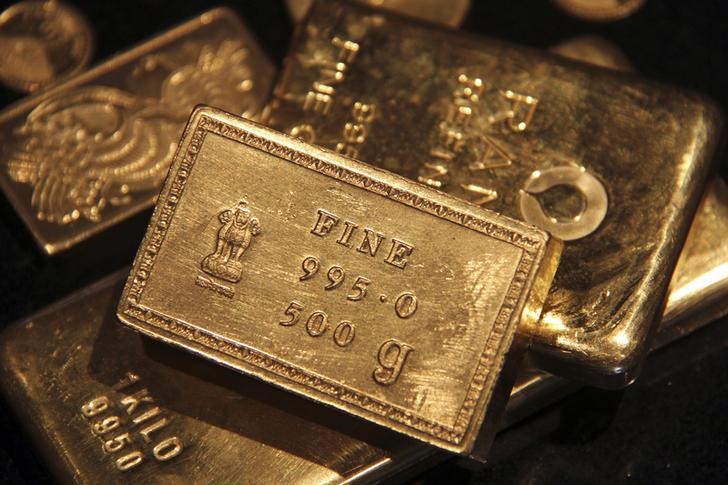Investing.com -- The gold bull is still trying to hang in there despite the less-than-perfect macro picture.
The front-month August gold contract on New York’s Comex settled Friday’s trade at $1,929.60 an ounce, up $5.90, or 0.3%, on the day. Earlier in the session, it fell to $1,919.85 — a new low since mid-March.
The spot price of gold, which reflects physical trades in bullion and is more closely followed than futures by some traders, was at $1,919.80 by 14:20 ET (18:20 GMT), up $6, or 0.3% on the day. It tumbled to a three-month low of $1,910.31 earlier.
For the week, the benchmark for COMEX gold finished down 2%, its sharpest swoon since the end of January.
For June thus far, the contract is down 2.6% after a 1.8% slide for May. Notwithstanding those monthly losses, it is still up more than 5% on the year.
Gold took a hit this week as the dollar rebounded after the Bank of England raised interest rates by half a percentage point — twice more than forecast — saying it needed to act against "significant" indicators that British inflation would take longer to fall. U.K.’s main interest rate is now at 5%, the highest since 2008 after the largest rate increase since February.
After rate hikes, the thing to watch would be swap futures
The U.K. central bank has raised rates for 13 consecutive times to trail just behind the Federal Reserve, which has brought U.S. rates to a peak of 5.25% with 10 straight rounds of tightening. The Fed itself indicates that it wants to raise rates at least twice more before the year ends.
“If swap futures start to believe the Fed will likely deliver two more rate increases, gold could remain vulnerable,” said Ed Moya, analyst at online trading platform OANDA. “However, if risk aversion runs wild, gold could see some flight to safety flows. Gold has key support at the $1,900 level and resistance at the $1,960 region.”
